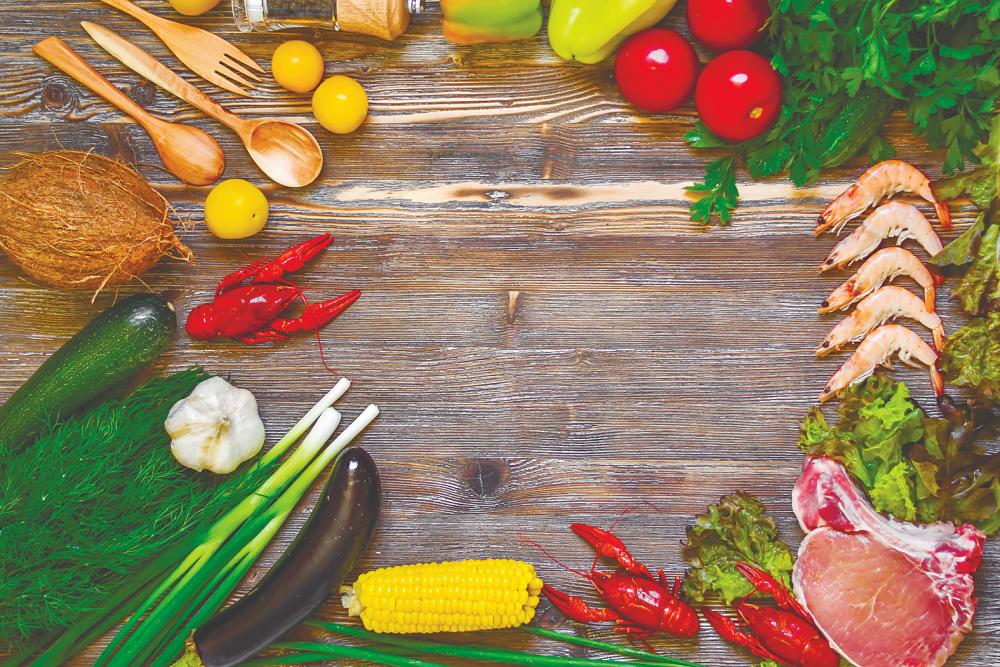Our diet and eating habits have changed dramatically over the last century. We can see the difference for ourselves by comparing the food that is commonly available today and what our grandparents generally used to consume. While our predecessors enjoyed foods that were close to its original form, our diet today is becoming increasingly unrecognisable.
When we go back to basics of why we eat, essentially, it is for nourishment. Based on traditional Chinese medicine and Ayurvedic medicine, the purpose is deeper – to enhance and promote the healthy flow of life force within the body, which in turn promotes good health and helps us keep illnesses at bay.
The problem is a lot of our go-to foods today contain very little vital nutrients. Meanwhile, the rise the pollution and stress actually calls for more vital nutrients to mitigate the side effects of our environment and lifestyle.
Still, it is not all about what we eat. It is also about how we eat, when, where and why? In this article, we cover the oft-unconsidered aspects of food as well as what we should really include in our diet.
Digestion, digestion, digestion
It is not the food you eat but how well you digest it that’s important. According to ancient Indian and Chinese doctrine, good digestion determines our health and the strength of our inner life force. When our digestive system is afflicted, so is our system of nourishment and and removal of waste including toxins. With a healthy digestive system, whatever food we consume would be completely digested with anything harmful, effectively removed from our body. Thus, top priority in promoting good digestion. But how?
▶ Do not eat when you are not hungry
It is a tell-tale sign that there is still food in the stomach that is not digested.
▶ Skip a meal
Only eat when you’re really hungry. There is a big difference between artificial hunger, which is psychological and real hunger. If you’re not sure which it is, it’s best to go without a meal.
▶ Cut down number of meals
As we lead more sedentary lives today, we don’t really need as much food to sustain our daily activities. Many of us could do with just two meals a day. This will ensure that whatever we consume is digested.
▶ Get active
If it is too difficult to cut down on meal times, make sure to get active. Daily exercise helps regulate our digestive system. Whether our digestion is erratic, high or weak, regular exercise will lead to healthy digestion. A long walk after a meal, also helps with digestion.
▶ Eat less
Always eat just half of your stomach capacity. You should feel slightly hungry even after eating, instead of feeling stuffed, which doesn’t allow movement in the stomach and slows down digestion.
Don’t fear food
Today, we are inundated with reports claiming that some food or the other is good or bad for us; or that we should load up on the latest superfood. Fear can lead us to overdo things. Take antioxidant foods for example. It is good for us but not too much because we do need oxidation in the body. Similarly, we can go to extremes limiting ourselves certain food groups, which may have a role to play in our overall wellbeing.
Fear also creates constriction, which encourages nothing in the body to flow, causing digestion to stagnate. This is why the environment and state of mind we’re in when we eat is as important as the food we consume. Based on Ayurvedic food principles, when we are relaxed as we enjoy a meal, facilitated by a calm environment, it encourages all the digestive juices to flow nicely. So our food is properly digested and assimilated.
Take a break
In ancient Ayurvedic text, it states that diseases begin with raga, which denotes passion, when it becomes unhealthy i.e. anger, vehement desire and interest in something or attachment. It advises us to take a break from anything that we are too attached or addicted to or which, takes too much of our attention, whether negative or positive. It can be too much screen time, attachment to a person or even a fervent desire for authentic, healthy food.
When it comes to food, this means taking a break from eating or going on a fast. Perhaps once a week, try to just sip on water all day or have soup for your meals. Alternatively, have only one type of vegetable or fruit. It doesn’t even have to be an all-day fast. Just avoiding eating for some period of time, like half a day, is beneficial enough.
By disconnecting from your normal diet, it allows the stomach the opportunity to rest and keep it in good condition.
Are you hot or cold?
Each of us react to the world differently. There are basically three ways people deal with the world. Some people are confrontational, their usual response is more anger based. Then there are those who are more inclined towards a fear-based response, who choose to avoid the problems that they face and hope they will go away. The third is a more balanced approach, maybe reacting with fear initially but eventually dealing with the issue.
For those who are anger-based, their internal environment tends to be hotter. While people who generally exhibit a reluctance to deal with the world and are often gripped by fear and anxiety, tend to be more constricted and thus, internally colder. Generally speaking, if you are more on the cold side, you would want to consume foods that would help you become less constricted. Food that are warmer, more liquid and easily assimilated.
If you’re a hotter person, drink a lot of coconut water and consume more vegetables, to release some of the heat.
When it comes to food...
Go local and seasonal
According to Ayurvedic and traditional Chinese medicine, our internal and external environment are connected. When we eat foods grown locally and which, follow the seasons or weather where we live, it keeps us in sync with the environment around us. Thus, aiding in our digestion but also strengthening our immunity. Locally cultivated foods also provide for our unique needs, keeping us cool when it’s hot and warming us up when it’s colder. Besides, when vegetables are picked when it is ripe and eaten soon after, it still has a strong life force and has good nutritional value.
Still, we don’t have to completely rid our diet of any foreign foods. For diversity, we can practice the 80-20 rule, 80% local and 20% foreign foods.
Choose real food
All foods as close to its original form are considered wholesome. According to traditional Chinese medicine, the more processed the food is, so is the life force within it weakened. Highly processed foods have extreme yin or yang properties, which does not promote a harmonious effect in the body.
Still, not all foods which have been processed are bad. Fresh salad bags are considered processed but is essentially fresh vegetables that have been washed, cleaned and bagged. It only becomes imbalanced when it goes through significant processing. For example, when an orange is peeled, juiced and has its pulp removed. When it is further processed for extraction of vitamin C or to make essential oil, the more extreme its properties become.
So, how to identify real food? Look for foods that are close to its original form or is recognisable.
Diversify your diet
When diets espouse one food group over the other, it unknowingly promotes a selective diet i.e. low carb, high fat diet. According to traditional Chinese medicine, diversity is important to our diet. The Yellow Emperor’s Inner Cannon, which is the earliest and most important written work of traditional Chinese medicine states that we should “Let the five grains nourish the five organs. Let fruits assist in the nourishment and let five farm animals be the tonic supplement.” While it encourages people to eat more grains and vegetables and consider meats and fruits as a supplement, the text promotes diversity in our diet.
Five being the symbol for diversity, it is essentially saying that we should not be selective about our food. For example, eat all types of vegetables (the colours of the rainbow). In fact, if it is indeed a good diet, it should be diverse and able to embrace the enemy too including carbs, fat, vegetables, meats and fruits.
Strike a balance
According to traditional Chinese medicine, a diet needs to have a counterbalancing reaction in order to be harmonious. For example, if a grain is slightly warming and a vegetable is slightly cooling, there is a counterbalance. The result is gentle and mild. Grains are considered very gentle, which is why it is highly recommended, together with veges. The two work very well in counterbalancing each other and should make up at least 70% of our diet. Only, grains need to be managed well. It has to be soaked properly to remove acidity and toxicity.
Fruits, legumes, nuts and seeds are more extreme and aggressive and should be considered a supplement. We do need a little of it to have a balance of the different elements. When all the different foods are included in our diet, the result is a little warmth. This is a transformative warmth, which is vital for our digestion and our overall health.
Information compiled in this article was presented at the 8th International Conference for Holistic Healing of Cancer. Guest speakers included Ayurvedic practitioner Robert Svoboda, traditional chinese medine expert Dr Wong Kee Yew and naturopath Dr Noorul Ameen Abdul Rahman.














